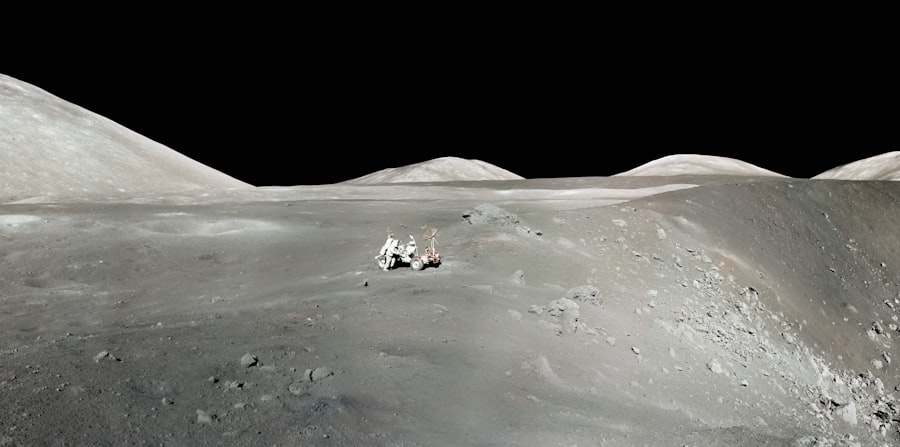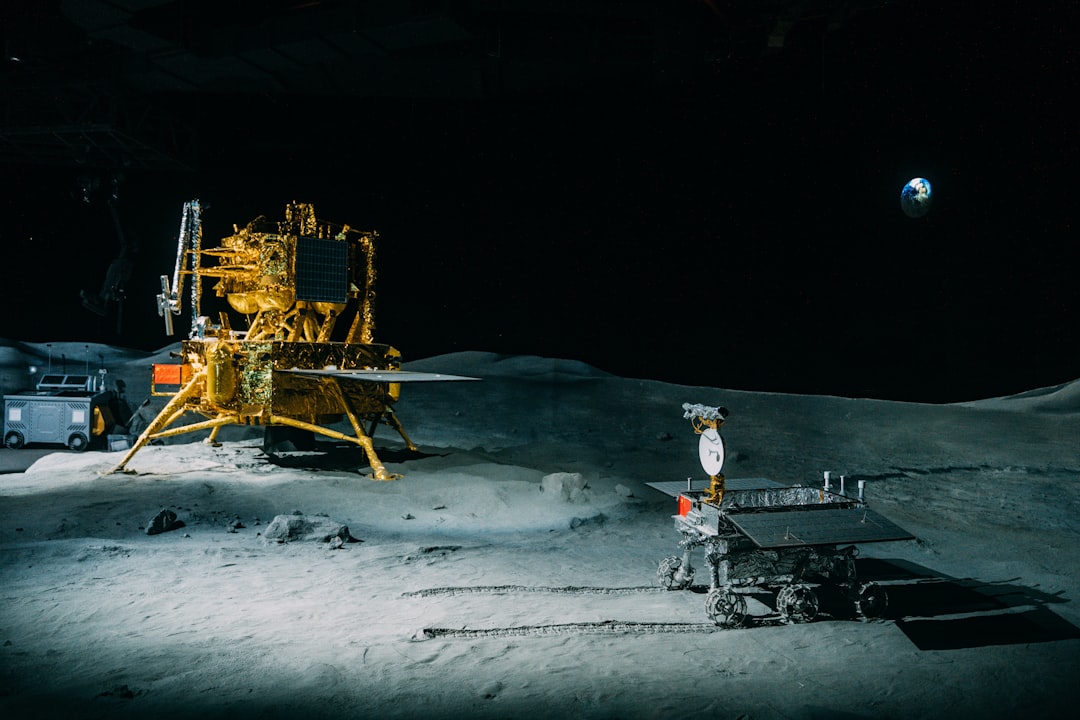The dawn of a new era in space exploration is upon humanity, with the Moon emerging as a focal point for both governmental and private sector interests. The potential for lunar infrastructure development has captured the imagination of entrepreneurs, scientists, and policymakers alike. As nations set their sights on returning to the Moon, the private sector is increasingly stepping into the limelight, ready to invest in the technologies and systems necessary for sustainable lunar habitation and exploration.
This investment is not merely a financial endeavor; it represents a paradigm shift in how space exploration is approached, with private companies taking on roles traditionally reserved for government agencies. The Moon, often referred to as Earth’s nearest neighbor, is seen as a stepping stone for deeper space exploration, including missions to Mars and beyond. The private sector’s involvement in lunar infrastructure development is crucial for several reasons.
It brings innovation, agility, and a competitive spirit that can accelerate progress. Moreover, the collaboration between public and private entities can lead to more efficient use of resources and expertise, ultimately paving the way for a new age of lunar exploration that could yield significant scientific and economic benefits.
Key Takeaways
- Private sector investment in lunar infrastructure is gaining momentum as companies look to capitalize on the opportunities presented by space exploration.
- The private sector plays a crucial role in advancing lunar exploration by bringing in innovation, efficiency, and competition to the industry.
- Challenges such as high costs, technical complexities, and regulatory uncertainties are balanced by opportunities for profit, technological advancement, and global collaboration in lunar infrastructure investment.
- Lunar infrastructure projects attracting private sector investment include mining, research facilities, communication networks, and transportation systems.
- Key players in private sector investment for lunar infrastructure include space agencies, aerospace companies, technology firms, and venture capitalists, all working towards shaping the future of space exploration.
The Role of Private Sector in Advancing Lunar Exploration
Private sector companies are playing an increasingly pivotal role in advancing lunar exploration. Unlike traditional government-led missions, which often face bureaucratic delays and budget constraints, private enterprises can operate with greater flexibility and speed. This agility allows them to develop new technologies and solutions that can be rapidly deployed for lunar missions.
Companies like SpaceX and Blue Origin are at the forefront of this movement, leveraging their expertise in rocket technology to create vehicles capable of transporting cargo and humans to the Moon. Furthermore, the private sector is not just limited to transportation; it encompasses a wide range of activities essential for lunar exploration. From developing habitats that can support human life on the Moon to creating systems for resource extraction and utilization, private companies are diversifying their contributions.
The collaboration between private firms and governmental space agencies can lead to groundbreaking advancements that push the boundaries of what is possible in space exploration.
Challenges and Opportunities for Private Sector Investment in Lunar Infrastructure

While the prospects for private sector investment in lunar infrastructure are promising, several challenges must be addressed. One significant hurdle is the high cost associated with space missions. Developing the necessary technology and infrastructure requires substantial financial resources, which can deter potential investors.
Additionally, the uncertainty surrounding regulatory frameworks and international agreements regarding lunar activities can create apprehension among private investors. The lack of established legal guidelines for property rights and resource utilization on the Moon further complicates investment decisions. Despite these challenges, numerous opportunities exist for private sector investment in lunar infrastructure.
The growing interest in space exploration has led to an influx of venture capital into the sector, with investors eager to support innovative companies that are pushing the boundaries of technology. Moreover, as governments around the world announce plans for lunar missions, they create a demand for services that private companies can fulfill. This symbiotic relationship between public initiatives and private investment can lead to a thriving ecosystem that fosters innovation and growth in lunar infrastructure development.
Types of Lunar Infrastructure Projects Attracting Private Sector Investment
| Type of Lunar Infrastructure Project | Description | Private Sector Investment |
|---|---|---|
| Lunar Rovers | Robotic vehicles for exploration and resource prospecting | High interest due to potential for scientific research and resource extraction |
| Lunar Mining Facilities | Infrastructure for extracting water, minerals, and other resources | Attracting investment for long-term resource utilization and commercialization |
| Lunar Habitat Modules | Living and working spaces for astronauts and researchers | Private sector involvement in developing sustainable habitats for long-duration missions |
| Lunar Transportation Services | Transportation systems for crew and cargo between Earth and the Moon | Private companies investing in launch and logistics capabilities for lunar missions |
A diverse array of lunar infrastructure projects is attracting private sector investment, each with its unique set of challenges and potential rewards. One prominent area of interest is the development of lunar habitats designed to support human life during extended missions. These habitats must be equipped with life support systems, radiation protection, and sustainable energy sources, making them complex engineering challenges that require significant investment.
Another area ripe for investment is resource extraction and utilization. The Moon is believed to harbor valuable resources such as water ice, which could be used for life support or converted into rocket fuel. Companies are exploring technologies for mining these resources efficiently and sustainably.
Additionally, advancements in in-situ resource utilization (ISRU) could reduce the need to transport materials from Earth, significantly lowering mission costs and increasing feasibility.
Key Players in Private Sector Investment for Lunar Infrastructure
Several key players are shaping the landscape of private sector investment in lunar infrastructure. SpaceX stands out as a leader in this domain, with its ambitious plans for lunar missions using its Starship vehicle. The company’s partnership with NASA for the Artemis program underscores its commitment to advancing lunar exploration through innovative technology.
Blue Origin is another significant player, focusing on developing reusable rocket technology and lunar landers through its Blue Moon project. Other companies like Astrobotic and Intuitive Machines are also making strides by offering lunar lander services aimed at delivering payloads to the Moon’s surface. These companies represent just a fraction of a burgeoning industry that is rapidly evolving as more players enter the market.
Government Policies and Regulations Impacting Private Sector Investment in Lunar Infrastructure

Government policies and regulations play a crucial role in shaping the landscape for private sector investment in lunar infrastructure. As nations establish their space exploration agendas, they must also create legal frameworks that govern activities on the Moon. The Outer Space Treaty of 1967 serves as a foundational document outlining principles for space exploration; however, it lacks specific guidelines regarding resource utilization and property rights on celestial bodies.
In recent years, some countries have begun to develop national policies that encourage private investment in space activities. For instance, the United States has enacted legislation aimed at promoting commercial space ventures, including those focused on lunar exploration. Such policies can provide clarity and stability for investors, fostering an environment conducive to innovation and growth.
However, international cooperation will be essential to ensure that all nations can benefit from lunar resources while adhering to ethical standards.
Financing and Funding Models for Private Sector Investment in Lunar Infrastructure
The financing landscape for private sector investment in lunar infrastructure is evolving rapidly as new funding models emerge. Traditional venture capital remains a primary source of funding for many startups focused on lunar projects; however, alternative financing mechanisms are gaining traction. Public-private partnerships (PPPs) are becoming increasingly popular as governments seek to leverage private expertise and resources while sharing risks associated with space missions.
Crowdfunding has also emerged as a viable option for smaller companies looking to raise capital for specific projects. By engaging with the public directly, these companies can generate interest and support from individuals who are passionate about space exploration. Additionally, grants from governmental agencies or international organizations can provide essential funding for research and development efforts aimed at advancing lunar infrastructure technologies.
Technological Innovations Driving Private Sector Investment in Lunar Infrastructure
Technological innovations are at the heart of private sector investment in lunar infrastructure development. Advancements in propulsion systems, robotics, and materials science are enabling companies to design more efficient spacecraft and habitats capable of withstanding the harsh conditions on the Moon’s surface. For instance, developments in additive manufacturing techniques allow for the construction of structures using local materials, reducing reliance on Earth-based supplies.
Moreover, innovations in autonomous systems are transforming how missions are conducted on the Moon. Drones and rovers equipped with advanced sensors can perform tasks such as surveying terrain or conducting experiments without direct human intervention. These technologies not only enhance mission efficiency but also reduce risks associated with human presence on the Moon during initial exploratory phases.
Environmental and Ethical Considerations in Private Sector Investment for Lunar Infrastructure
As private sector investment in lunar infrastructure grows, so too do concerns regarding environmental sustainability and ethical considerations. The potential exploitation of lunar resources raises questions about the long-term impact on the Moon’s environment and whether such activities could lead to irreversible damage. Companies must navigate these concerns carefully to ensure that their operations do not harm celestial bodies or violate international agreements.
Ethical considerations also extend to issues of equity and access to lunar resources. As more players enter the market, there is a risk that wealthier nations or corporations could monopolize valuable resources on the Moon, leaving less developed countries at a disadvantage. Establishing fair practices and collaborative frameworks will be essential to ensure that all nations can benefit from lunar exploration while adhering to ethical standards.
Future Prospects and Trends in Private Sector Investment for Lunar Infrastructure
The future prospects for private sector investment in lunar infrastructure appear bright as interest continues to grow across various sectors. As technological advancements make lunar missions more feasible, an increasing number of companies are likely to enter this burgeoning market. The trend toward international collaboration will also play a significant role in shaping future investments; partnerships between nations can lead to shared resources and expertise that enhance mission success.
Moreover, as public interest in space exploration rises, so too does the potential for commercial opportunities related to tourism and entertainment on the Moon.
These emerging trends could further stimulate investment in lunar infrastructure projects while expanding humanity’s presence beyond Earth.
The Impact of Private Sector Investment on the Development of Lunar Infrastructure
In conclusion, private sector investment is poised to have a transformative impact on the development of lunar infrastructure. By leveraging innovation, agility, and competitive spirit, private companies are driving advancements that were once thought possible only through government-led initiatives. As they tackle challenges related to cost, regulation, and sustainability, these enterprises are creating new opportunities that will shape humanity’s future in space.
The collaboration between public entities and private firms will be essential as they work together to establish a sustainable presence on the Moon. With continued investment and innovation, humanity stands on the brink of a new era of exploration that could unlock untold scientific discoveries while fostering economic growth through commercial ventures beyond Earth’s atmosphere. The journey toward establishing a robust lunar infrastructure has only just begun, but its implications will resonate throughout generations to come.
In recent years, there has been a growing interest in private sector investment in lunar infrastructure, as companies seek to capitalize on the potential of the Moon as a hub for scientific research, resource extraction, and even tourism. A related article on this topic can be found on Real Lore and Order, which discusses the various initiatives and collaborations between private companies and governmental space agencies aimed at establishing a sustainable presence on the lunar surface. For more insights, you can read the full article by visiting this link.
WATCH THIS! 🚀 Why The Moon Is The Next Battlefield: The Geopolitics of Cislunar Space
FAQs
What is private sector investment in lunar infrastructure?
Private sector investment in lunar infrastructure refers to the involvement of private companies and organizations in funding, developing, and operating infrastructure on the moon. This can include habitats, transportation systems, mining operations, and other facilities to support human presence and activities on the lunar surface.
Why is private sector investment in lunar infrastructure important?
Private sector investment in lunar infrastructure is important because it can accelerate the development of sustainable and cost-effective solutions for human exploration and utilization of the moon. It can also drive innovation, create new economic opportunities, and expand the capabilities of space exploration beyond what government-funded programs alone can achieve.
What are some examples of private sector investment in lunar infrastructure?
Examples of private sector investment in lunar infrastructure include companies developing lunar landers, rovers, habitats, and other technologies for lunar exploration and resource utilization. Some companies are also exploring the potential for mining and extracting resources such as water ice and rare minerals from the moon.
How does private sector investment in lunar infrastructure differ from government-funded initiatives?
Private sector investment in lunar infrastructure differs from government-funded initiatives in that it is driven by commercial interests and profit motives. While government-funded programs may prioritize scientific research and national interests, private sector investment focuses on developing sustainable business models and commercial opportunities in space.
What are the challenges and opportunities associated with private sector investment in lunar infrastructure?
Challenges associated with private sector investment in lunar infrastructure include technical and engineering hurdles, regulatory and legal uncertainties, and financial risks. However, there are also significant opportunities for companies to pioneer new technologies, establish a foothold in the emerging space economy, and contribute to the long-term sustainability of human presence in space.
